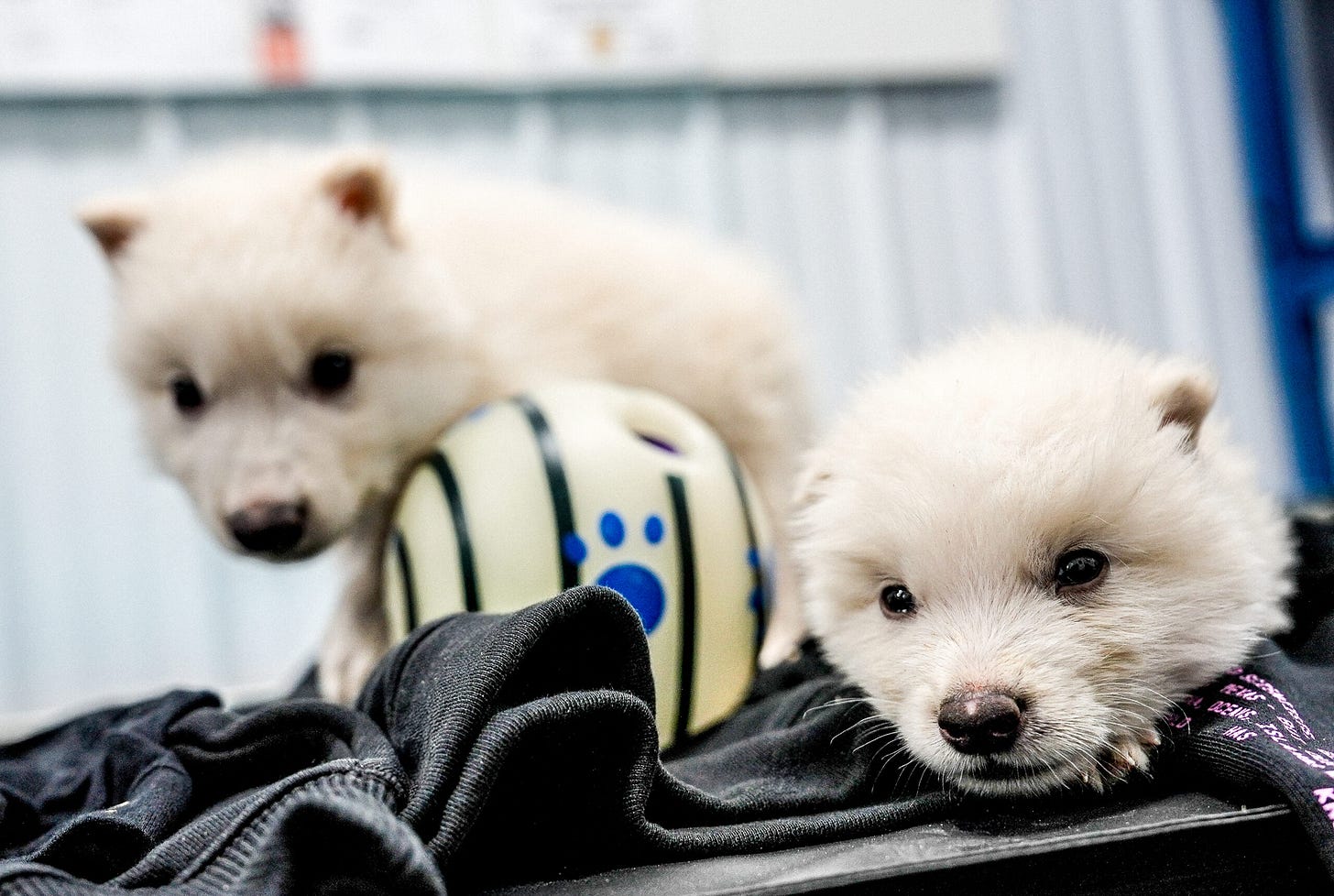De-Extinction?
Last week humanity witnessed a scientific miracle: the return of three "dire wolf" pups to Earth after a 12,000 year-long period of extinction.
Colossal Biosciences recently announced the birth of three genetically engineered wolf pups—Romulus, Remus, and Khaleesi—that exhibit traits of the extinct dire wolf, a species that vanished approximately 10,000 years ago. This development marks a significant milestone in the field of de-extinction
I have been following this project with some interest, having met the founders of Colossal via Peter Diamandis at the Abundance 360 conference a few years ago.
Meet the Modern Dire Wolves
Romulus and Remus: Born in October 2024, these male pups are named after the legendary founders of Rome, who, according to myth, were raised by a she-wolf.
Khaleesi: Born in January 2025, this female pup's name is inspired by a title used by a prominent character in the "Game of Thrones" series, reflecting the cultural fascination with dire wolves.
These animals are currently housed in a secure ecological preserve in the United States, where they are monitored for health and behavior.
The Science Behind the Revival
Colossal Biosciences, founded only four years ago (2021) by Dr. George Church and Ben Lamm, now employes 130 scientists, has raised an impressive $200M+ at a $10.2B valuation, and has set out a bold sequence of Moonshots: to “de-extinct” the woolly mammoth by early 2028, with Tasmanian tigers, Dodo birds, and many other species to follow.
Colossal's team utilized ancient DNA extracted from a 13,000-year-old tooth and a 72,000-year-old ear bone to identify key genetic differences between dire wolves and their closest living relatives, gray wolves. By editing 20 specific genes in gray wolf embryos, scientists aimed to recreate the physical characteristics of dire wolves, such as larger size and stronger builds. These embryos were implanted into surrogate domestic dogs, leading to the birth of the three pups.
Controversy
While the achievement is groundbreaking, it raises questions about the authenticity of de-extinction. Some experts argue that these animals are not true dire wolves but rather genetically modified gray wolves with certain dire wolf traits. Colossal emphasizes that their goal is not to recreate exact genetic copies but to restore lost ecological functions and support biodiversity.
This development not only showcases the advancements in genetic engineering but also sparks discussions on the ethical and ecological implications of bringing extinct species back to life.
This announcement by Colossal Biosciences in the pages of TIME sparked a fierce debate between those who celebrated this event as a scientific miracle and those who claim otherwise.
"All the people whining that @colossal didn't create dire wolves because they actually just spliced 10,000 year old dire wolf DNA with gray wolves should spend their time arguing that Jurassic Park did not, in fact, depict any dinosaurs."
- @PalmerLuckey




Good summary which gives both sides of a polarising topic.